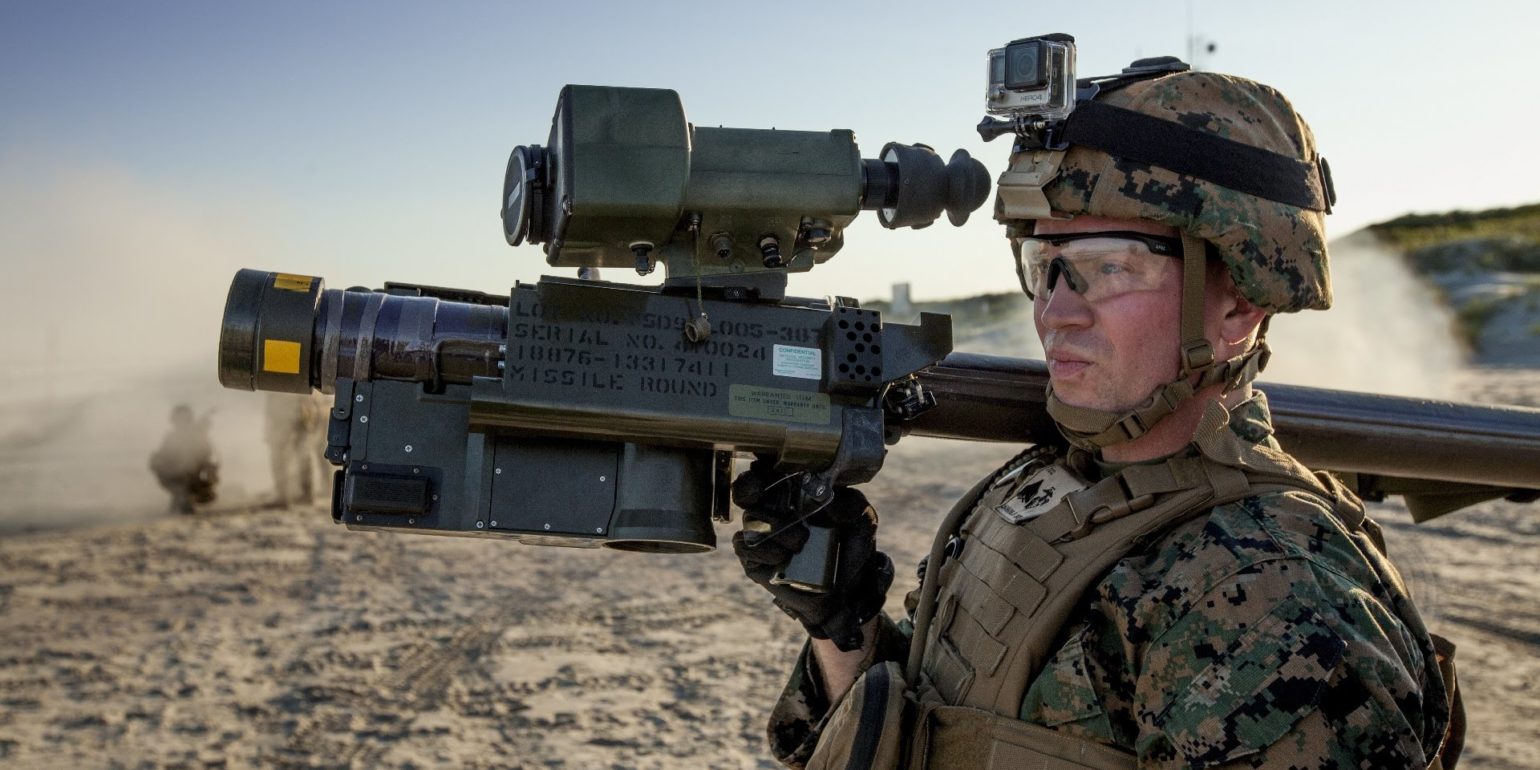| Variants | FIM-92A: [i]
FIM-92B: 1983, FIM-92C: 1987, FIM-92D, FIM-92E: 1992, FIM-92F: 2001, FIM-92G: [ii] |
| Role and Mobility | Short-Range Surface to Air Missile; Man and system portable |
| Interceptors and Range | Range: 4.8 km[iii]
Altitude: 12,500ft (3.8 km) |
| Sensors | Infrared guidance system |
| Targets | Aircraft |
| Status/Exports | Operational: U.S.; Exported: Afghanistan (both the national army and the Mujahideen), Angola, Bangladesh, Bosnia and Herzegovina, Croatia, Chad, Chile, Denmark, Egypt, Germany Greece, Iraq, Israel, Italy, Japan, Lithuania, Netherlands, Norway, Pakistan, Portugal, Taiwan, Slovenia, Spain, Ukraine and Switzerland. [iv] |
| Designer/Producer | General Dynamics/Raytheon[v] |
Facts
Weight (Empty): 33.51 lb (15.20 kg)[vi]
Overall Length: 1,520 mm (59.84 in)
Barrel Length: 1,520 mm (59.84 in)
Overview
The FIM-92 “Stinger” is a short-range man-portable air defense system (MANPADS).[vii] The stinger was designed to provide air defense capabilities to U.S. and allied troops when forward deployed and thus eliminate the immediate need for air support should an enemy aircraft threaten the troops. The FIM-92 Stinger served as a replacement to the FIM-43 Redeye. The stinger entered service in 1978 after nearly 10 years of development and delays. Since then, there have been multiple upgrades and modifications made to the stinger.
FIM-92A: Original stinger system, which replaced the redeye. Originally considered the “redeye II,” the 92A involved an upgraded infrared system than its predecessor. The upgraded infrared homing guidance system was designed to discriminate countermeasures more effectively than the redeye’s system. Since the creation of the FIM-92 there have been multiple upgrades to include the FIM-92B in 1983, the FIM-92C in 1987, the FIM-92D in, the FIM-92E in 1992, the FIM-92F in 2001, and the latest model, the FIM-92G.[viii]
The stinger has also been modified to be used in ground-based air defense systems such as the M1097 “Avenger” and adapted to airborne-based platforms such as the AH-64 “Apache” helicopter.[ix]
Strategic Implications
The stinger provides air defense for light infantry (not protected by armored vehicles) platoon size elements during missions and “outside the wire” activities. This capability allows air defense at the tactical level, offering U.S. and allied troops a way to defend themselves from aerial attack, while offering the mobility a light infantry unit needs to conduct its missions. Without the stinger, the platoon would not be able to defend themselves against an aerial attack without armored vehicles or tanks.
The stinger has proven to be an extremely useful tool for Ukrainian forces facing the Russian invasion particularly when defending against helicopters and drones. In one instance on March 5, 2022, Ukrainian forces used a stinger to bring down a Russian Mi-24 helicopter gunship.[x] In another on April 22, Ukrainian marines and paratroopers destroyed two Russian Mi-8 transport and combat helicopters with a stinger.[xi] The Ukrainian stockpile has been replenished by many countries, with 1,400 stingers supplied by the United States, 500 from Germany, 200 from the Netherlands, along with smaller shipments from other countries.[xii]
[i] https://www.militaryfactory.com/smallarms/detail.asp?smallarms_id=30
[iii] ibid
[iv] ibid
[v] ibid

